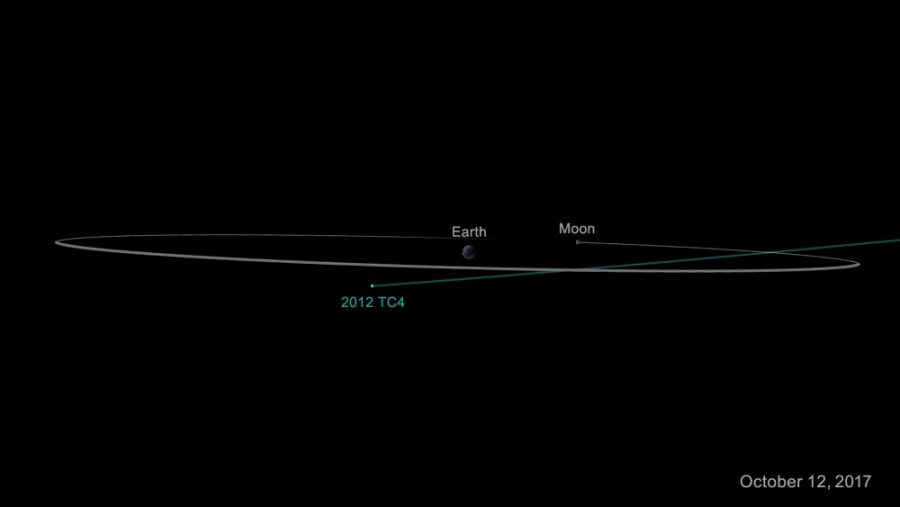The University of Arizona is partnering with NASA and observatories across the world to observe an asteroid named 2012 TC4.
The purpose of this experiment, which is the first of its kind, is to test humanity’s capabilities to defend itself from extraterrestrial threats, such as asteroids and to assess overall strengths and weaknesses of the current tracking and detection systems, according to NASA.
2012 TC4’s orbit is unstable, meaning scientists have yet to fully grasp its orbital pattern, but they do know there is no danger of it striking Earth.
“We had people from NASA Planetary Defense Coordination Office at the UA in January, and I proposed this idea to them, and they went for it,” said UA assistant professor of planetary science Vishnu Reddy.
Earth has several asteroids and other space rocks in orbit around it, with hundreds of thousands of pounds of debris entering the atmosphere on a yearly basis. Typically, though, the rocks are so small they burn up on entry.
What scientists fear are the larger asteroids, such as the one that exploded over Chelyabinsk, Russia, four years ago. The asteroid 2012 TC4 is approximately the same size.
As these asteroids fly by, observatories from across the world make their own individual observations.
“When we discuss how to deflect an asteroid, usually they’re meetings composed of scientists, bureaucrats and engineers, and they figure out how to safely evacuate a major city,” Reddy said.
As all the situations are hypothetical, it leaves much to be desired in terms of real data, according to Reddy.
RELATED: Space experts comment on closest-yet Jupiter photo mission
“So I said, ‘why not take it to the next level and actually use a real asteroid fly by?’ ” Reddy said. “We asked observers to observe the asteroid in a coordinated way and give information to the modelers who could model the hazard this asteroid could pose.”
By observing a mostly harmless asteroid, NASA can gauge just how prepared they are for a catastrophic asteroid, where the weak points are and their strengths. The results should also have an effect on bureaucrats, telling policy makers what needs prioritizing.
2012 TC4 was chosen as the test subject because of how long ago it was spotted.
“Typically, we learn of asteroids a day or two before they come close to the Earth,” Reddy said. “But this asteroid was discovered five years ago, and we knew it would be really close in October.”
This gave researchers plenty of time to get their ducks in a row. Reddy said they have been getting together observatories and designing proper observational experiment.
The asteroid is estimated to come as close as 6,800 kilometers (4,225 miles), and observers are using this time to map out its orbit.
The orbit of the asteroid is uncertain because all of current understanding of it comes from observations and measurements made in 2012, Reddy said.
“We went back and re-measured the old observations we made in 2012 using the latest software, which we used to refine our observations,” Reddy said.
Researchers won’t just be examining the asteroids orbit.
“We also want to know what it’s made of, how fast its going and its shape,” Reddy said.
RELATED: Headlines from space: Possible planet in the Kuiper belt?
More than 20 observatories around the world will participate. Some observatories will specialize in certain aspects of the mission. Some will use optics to observe the asteroid to determine its rotational and orbital speed, and others will determine its shape and composition, Reddy said.
“We’re using our telescopes in different ways,” Reddy said. “We have telescopes that observe in the infrared to find out what it’s made of and other telescopes that bounce radio waves off the asteroid to try and find out its shape.”
The updated data collected from 2012 TC4 in October will be used to re-evalate the current planetary defense systems, according to Reddy.
“Things are not as predictable as you expect them to be,” Reddy said. “So in January, we’re hoping to sit down and discuss areas where we need to improve and what we did well.”
Follow William Rockwell on Twitter









